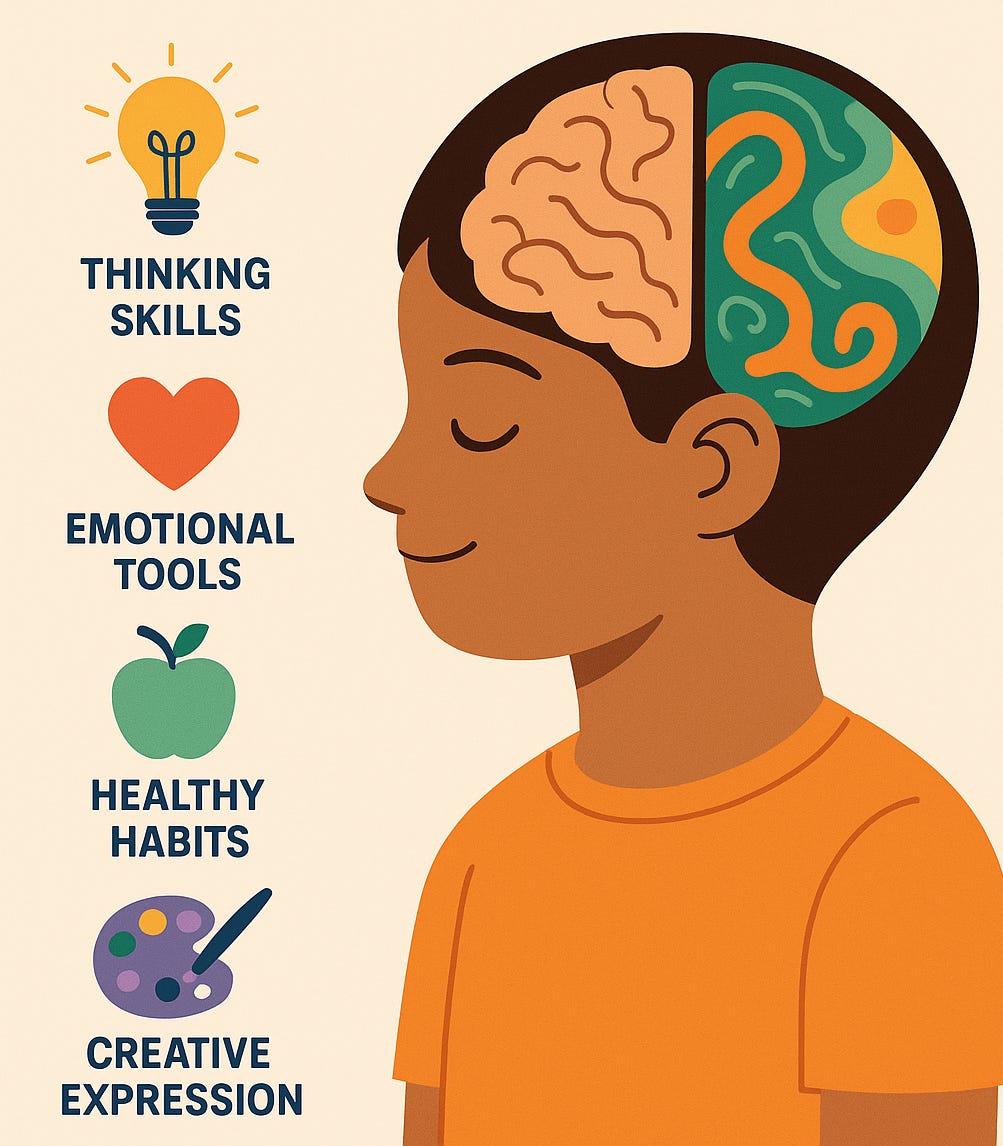Why Whole Child Development Is the Education Shift We Can’t Afford to Ignore
By: Saliha Bazmjow
We’re raising kids in a time that doesn’t look anything like the one we grew up in.
AI is already here. Tech is moving fast. The world is changing, and schools are struggling to keep up. Most classrooms still operate like it’s 1999—with a heavy focus on test prep, pacing guides, and checking boxes—while overlooking what’s actually going on with the kids in front of us.
But any educator or parent can tell you—kids don’t come to school as blank slates. They come with emotions, experiences, and stories. Learning isn’t just academic. It’s personal.
That’s why we can’t keep talking about student growth without talking about the whole child.
So, what is Whole Child Development?
Whole child learning is about supporting every part of a child not just their test scores.
It’s how they think and solve problems. 2. It’s how they feel and manage stress. 3.It’s how they connect with others and build a sense of self. 4. It’s how they express themselves, and how safe and seen they feel in school.
This includes:
Thinking skills like focus, memory, and problem-solving
Emotional tools like empathy and self-awareness
Healthy habits like sleep, movement, and nutrition
Creative expression through art, music, and play
A strong sense of identity and belonging
This isn’t extra. This is the work. Kids can’t learn if they don’t feel safe, supported, and connected.
Where is this already happening?
You see pieces of it in a lot of places—but not enough.
In preschool programs that follow California’s Preschool Learning Foundations, where SEL, language, and identity are embedded
In schools that use the CASEL framework to teach emotional intelligence alongside academics
In community schools that wrap in mental health care, nutrition, and family support
In international systems like Finland or Singapore, where wellbeing is a core part of education
And in Montessori, Waldorf, and Reggio Emilia classrooms, where creativity and curiosity drive learning
Here in Orange County, we’ve seen schools make incredible progress when whole child practices are part of the foundation—not just a side effort.
Why does this matter?
When we meet students where they are not just academically, but emotionally and developmentally everything improves.
Here’s what the research shows:
A meta-analysis of 213 SEL programs found that students had an 11-point gain in academic achievement, stronger emotional well-being, and fewer behavior issues. https://casel.s3.us-east-2.amazonaws.com/meta-analysis-child-development-1.pdf
The CDC links early emotional regulation to higher graduation rates, fewer mental health issues, and stronger life outcomes.https://www.cdc.gov/healthyyouth/data/protective.htm
Kids in Head Start: which includes health, nutrition, and parent engagement show stronger gains in school readiness, especially in low-income communities.https://acf.gov/opre/report/head-start-impact-study-final-report-executive-summary
The Perry Preschool Study found that investing in early whole child education brought a 13-to-1 return over time. Better earnings, better outcomes, fewer issues later in life.https://cehd.uchicago.edu/?page_id=958
Theres so much data to back this up, so the real question is now:
Why isn’t every school doing this?
The system still rewards test scores over long-term learning
SEL, the arts, and mental health supports are the first to get cut when budgets shrink
Many teachers don’t get the training or planning time they need to teach this way (also many teachers are not prepared in teaching program to teach this way…)
It’s easier to track math scores than it is to measure confidence or belonging so those things often get pushed aside
And yet, those are the exact skills our kids need most—especially in a world shaped by tech, change, and uncertainty.
Where do we go from here?
We can’t keep preparing kids for yesterday’s world.
Being “college and career ready” doesn’t mean much if students don’t know how to manage stress, solve real-world problems, or connect with others.
If Orange County wants to lead—not follow—this is our moment. And it starts with shifting what we value.
We need to:
Prioritize early childhood education that builds strong SEL and foundational thinking
Train teachers in trauma-informed and inclusive practices, starting in credential programs
Create systems that measure more than test scores—let’s track engagement, connection, and identity too
Build real partnerships between schools, families, and communities so students feel supported in all areas of life
Final thought
If we want students to thrive..not just survive we can’t keep doing things the old way.
Let’s stop asking kids to adapt to outdated systems. Let’s build schools that actually reflect the kind of world they’re growing up in.



It’s always so ridiculous to me that it isn’t *obvious* that this is the sort of education kids need. Of course, that assumes the system puts top priority on the students’ needs and not on textbook and testing companies making their bucks. 😖